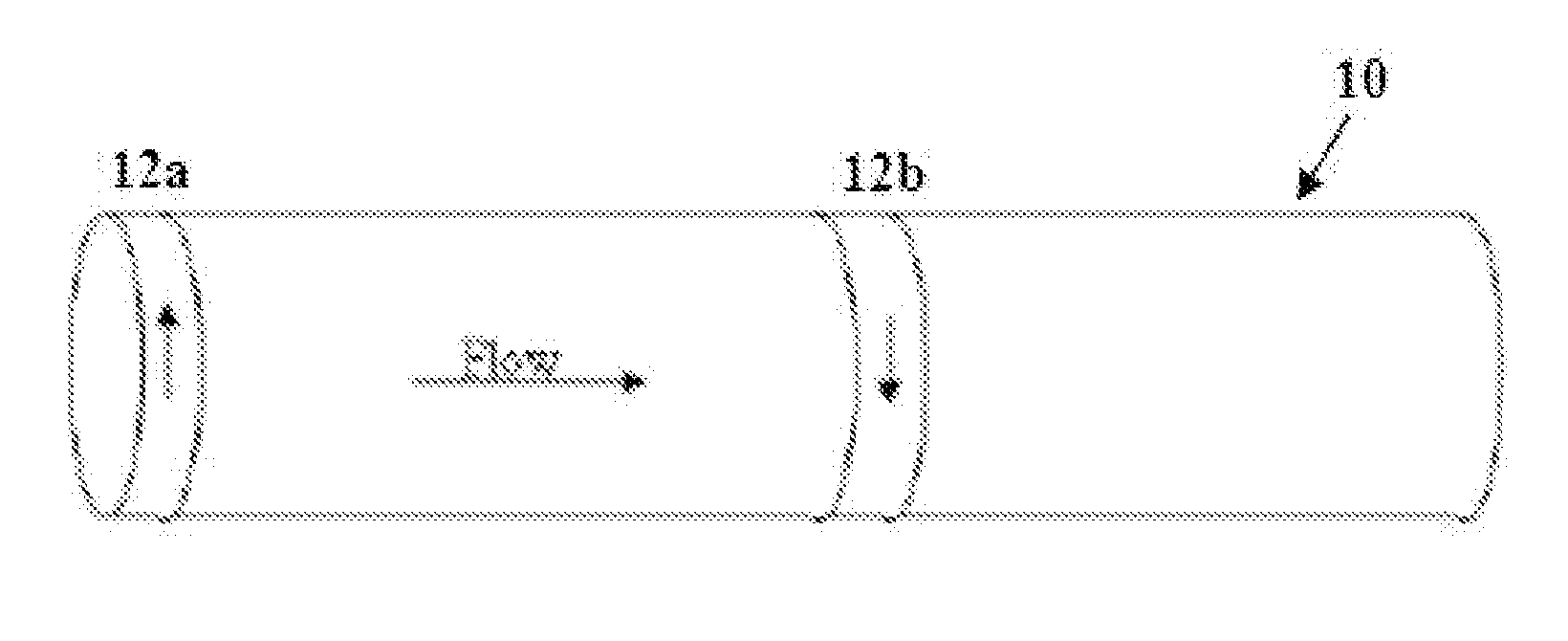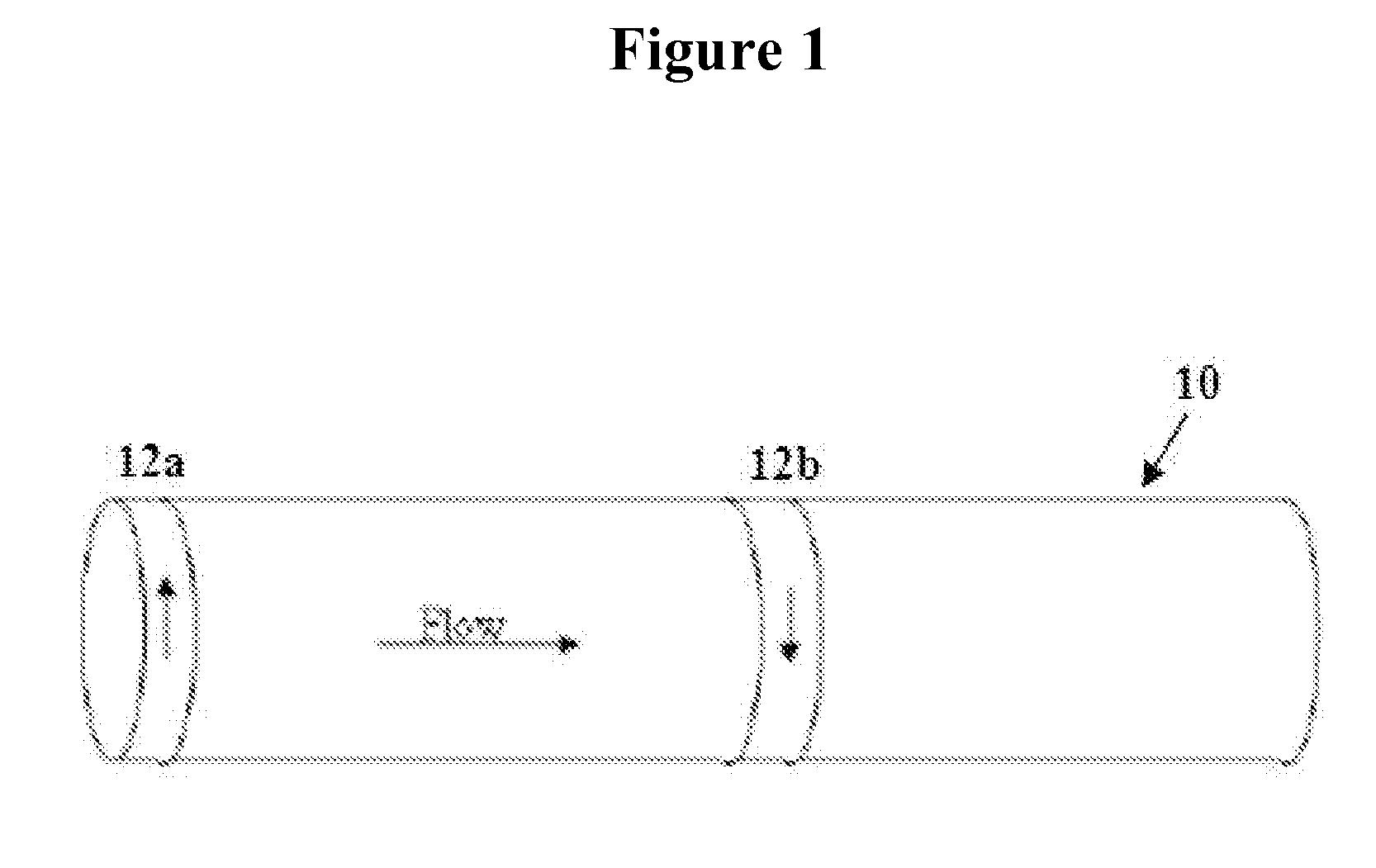System and method for turbulent flow drag reduction
a technology of turbulent flow and reduction method, applied in pipeline systems, circuit elements, thin material processing, etc., can solve the problems of reducing speed and fuel efficiency, high cost of pumping, slowing down fluid flow, etc., and achieve the effect of reducing turbulent flow drag
- Summary
- Abstract
- Description
- Claims
- Application Information
AI Technical Summary
Benefits of technology
Problems solved by technology
Method used
Image
Examples
Embodiment Construction
[0012]The present invention will now be described with respect to one or more particular embodiments of the invention. The following detailed description is provided to give the reader a better understanding of certain details of embodiments of the invention depicted in the figures, and is not intended as a limitation on the full scope of the invention, as broadly disclosed and / or claimed herein. In addition, for purposes of this disclosure, it should be understood that, unless otherwise indicated, “a” means one or more.
[0013]FIG. 1 shows an illustration of discrete counter-rotating elements (12a), (12b), for example counter-rotating strips, disposed adjacent to a bounding surface (10), such as a section of pipe. The counter-rotating elements (12a), (12b) are rotated in opposite directions as shown. As the elements (12a), (12b) are rotated in their respective directions, each generates a small counter-rotating flow effective to disrupt or reduce stream-wise vortices and / or traveling...
PUM
 Login to View More
Login to View More Abstract
Description
Claims
Application Information
 Login to View More
Login to View More - R&D
- Intellectual Property
- Life Sciences
- Materials
- Tech Scout
- Unparalleled Data Quality
- Higher Quality Content
- 60% Fewer Hallucinations
Browse by: Latest US Patents, China's latest patents, Technical Efficacy Thesaurus, Application Domain, Technology Topic, Popular Technical Reports.
© 2025 PatSnap. All rights reserved.Legal|Privacy policy|Modern Slavery Act Transparency Statement|Sitemap|About US| Contact US: help@patsnap.com



